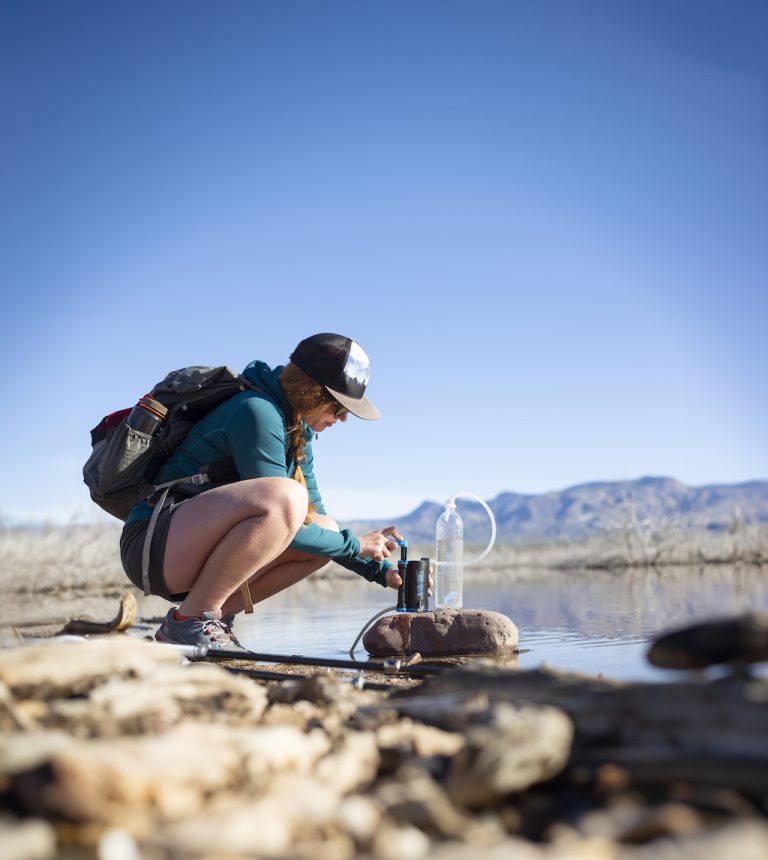This article was originally published in Wired For Adventure Volume 22.
There are some nasty things lurking in the world’s waterways, but if you’re on a long adventure and can’t carry the weight in water you’ll need, then you don’t have much choice but to drink it. In order to minimise the risk, many adventurers opt to carry some sort of purifier that will help to filter out the bad stuff.
There are mechanical, chemical, UV, and heat-based purifiers on the market, but what they all do, how reliable they are, and what you can rely on them for differs. The one that’s right for you can be hard to nail down. That’s why we found the nastiest streams in our vicinity and have been testing out a bucket load of different purifiers to help you make the most informed choice.
There is a distinction between a filter and a purifier. Filters remove bacteria and parasites and purifiers tackle viruses as well. We have used the term purifier when talking generally, but when we delve into the individual products you will see that we refer to them by their proper names. Always do your own research before relying on a purifier.
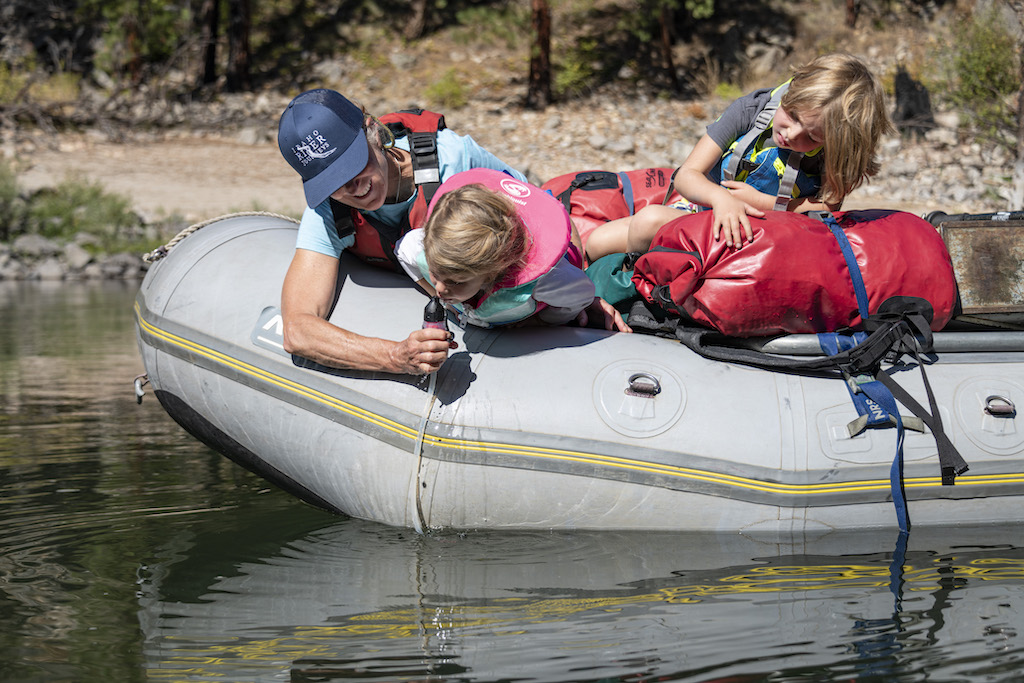
The Basics
The nasty things you want to be concerned about in wild water are bacteria, parasites, viruses, microplastics, chemicals and heavy metals. Where you are in the world changes what you should be most concerned about, and you can find out what that is with a quick Google. In most cases, it’s the bacteria, parasites, and viruses that we’re looking to extract.
No purifier is 100% fool proof, so to start strong, look for a running water source, ideally away from any agricultural production (to avoid harmful chemicals and heavy metals). While it’s true that dirty looking water isn’t necessarily full of diseases and clean looking water isn’t necessarily potable, you can do yourself a favour by looking for the most crystal-clear stream you can find.
If you don’t have a purifier on you, then you can revise your Scouting skills, build a fire and boil the water. You’ll want to run cloudy water through a cotton or fine mesh cloth to try and get out any mud or dirt. Boiling water is the most reliable method of creating safe drinking water, which is why it’s always prudent to carry a little metal mug or container so you can resort to this method easily.
Now to the purifiers. Like we mentioned above, there are four main portable purifying types on the market and they all do different things. It’s important to check what your personal purifier does regardless of what type it is, but here are the basics:
Mechanical: Mechanical purifiers work like mini sieves, letting the water through and blocking the bad stuff, including sediment. The two main types are ceramic and hollow-fibre, but hollow-fibre is the system of choice for adventurers, because it’s lighter and has a better flow rate. You mustn’t let hollow-fibre purifiers freeze, as they will break. It’s also important to back flush them regularly so sediment doesn’t build up.
Mechanical purifiers can be pretty powerful depending on how they’re being used. If you have a mechanical purifier set in a pressure system with a pump, then it’s likely it will be able to get out bacteria, parasites and viruses – anything bigger than around 0.02 microns (which isn’t very big at all). If you have a good non-pressurised product then it will probably manage anything from 0.1-0.2 microns, which is bacteria and parasites. These latter non-pressurised systems are usually lighter, smaller, and cheaper than pumps, so if you’re in a region where viruses aren’t a huge concern they may be a better option. Most of these purifiers will also have carbon filters attached. Carbon filters are great to get rid of any bad smells and tastes and are also effective at filtering chlorine and some other chemicals, but they aren’t fool proof, so avoid water that may have been exposed to chemicals and heavy metals.
Chemical: Chemical purifiers typically come in the form of tablets or drops and are made of Chlorine Dioxide (most popularly), Chlorine, or Iodine. It’s unlikely you’ll come across Iodine tablets in the EU, but if they’re all you have to hand they will still do the job. Chlorine Dioxide is generally considered the best for its mild taste and smell.
Chemical purifiers work by neutralising or eliminating the harmful stuff and are pretty reliable when it comes to bacteria, parasites, and viruses. The main annoyance with chemical purifiers is you have to mechanically filter any sediment out of your water first and, per purchase, they don’t treat as many litres as other purifiers. Of course, they’re generally cheaper and smaller, but even if you spent the same amount of money on your average tablets as you did an average mechanical ‘squeeze’ purifier, you’d still only be able to treat around 5% of the water you would with the squeeze purifier. This makes them great for one off trips, but not if you’re spending a lot of your time out in the wild.
UV Light: Like some sort of super villain, UV purifiers radiate the nasties to death. Typically, these nasties are viruses, bacteria and parasites. Like with the chemical purifiers, you’ll have to get any sediment out of your water yourself, but after that it is as simple as pushing a button and stirring. The main downside to UV purifiers are the fact that you’ll have to carry spare batteries or find a reliable way to charge them.
Heat: This isn’t an official category as it’s just the concept of fire, but boiling water really is the best way to make it safe to drink. The downsides of doing it this way include wasting a lot of fuel and having to mechanically filter any sediment out of your water. Adding extra fuel of course adds extra weight, but if you’re a dab hand at finding kindling and flint, you can minimise this by starting controlled natural fires (where it is safe and legal to do so).
Now let’s get into the nitty gritty of it. Below, you’ll find some of the best purifiers on the market and their pros and cons.
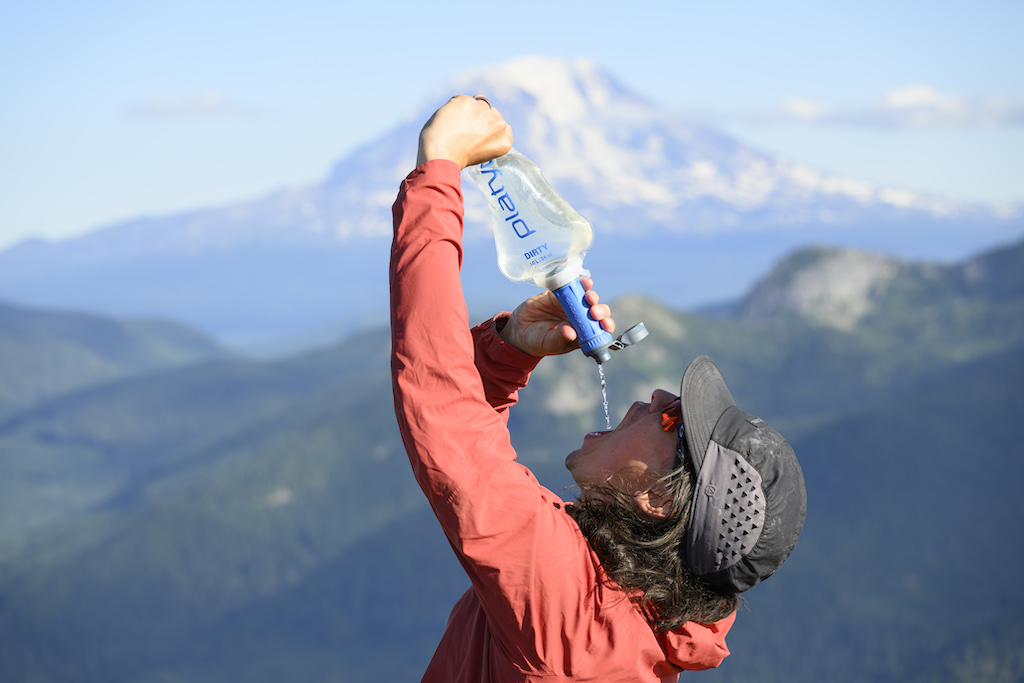
Mechanical
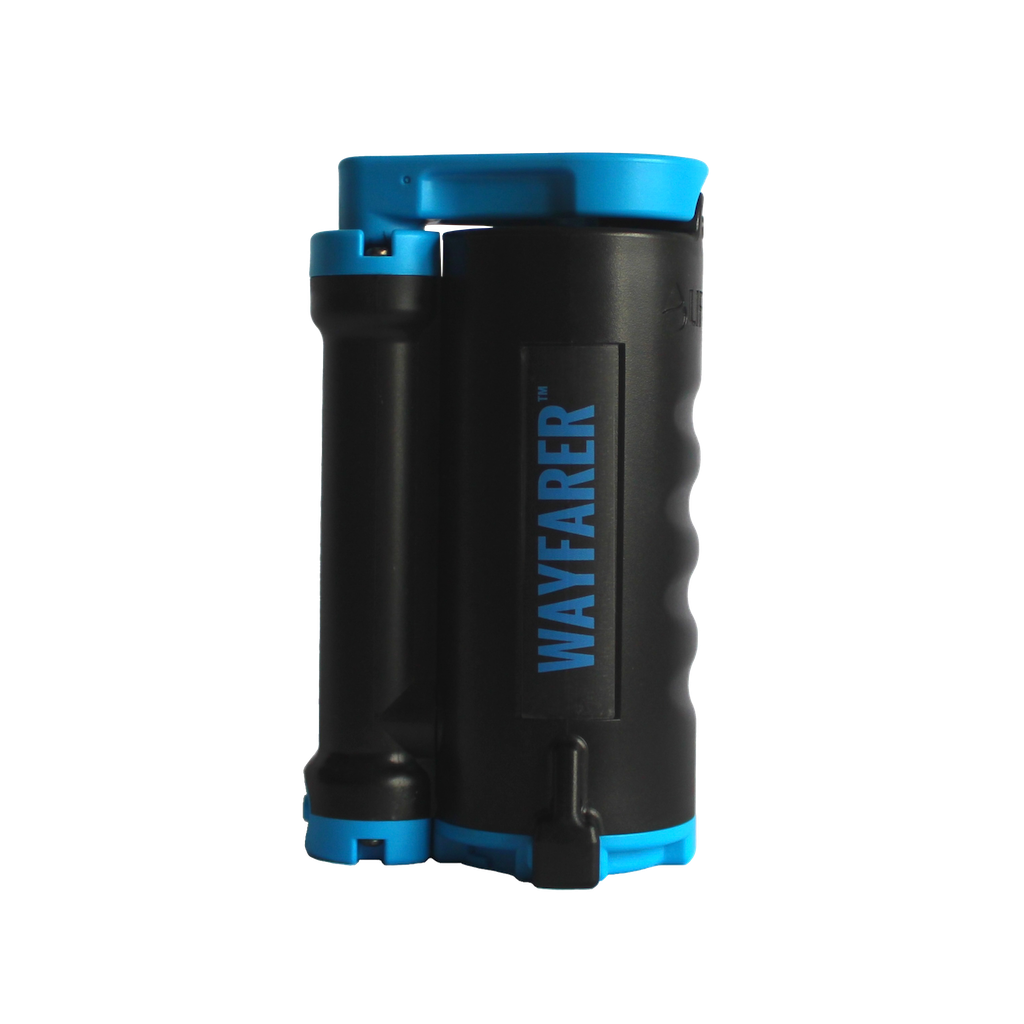
Removes: Viruses, bacteria, cystic parasites, sediment
Treats: 5000L
Weight: 323g
Though this pressurised pump is on the bigger and heavier side, it is our overall favourite. The flow rate and quality of the filtration is unmatched, and although pumping the water by hand can be a bit of a workout, knowing almost everything that could do you harm is removed is a comfort. It isn’t too bulky despite being bigger than others on this list, and it comes with its own dry bag so you don’t have to worry about packing wet equipment. Plus, you have the option to bulk treat water for the day. However, replacement cartridges can be pricey on top of the already high price point.
£104.99
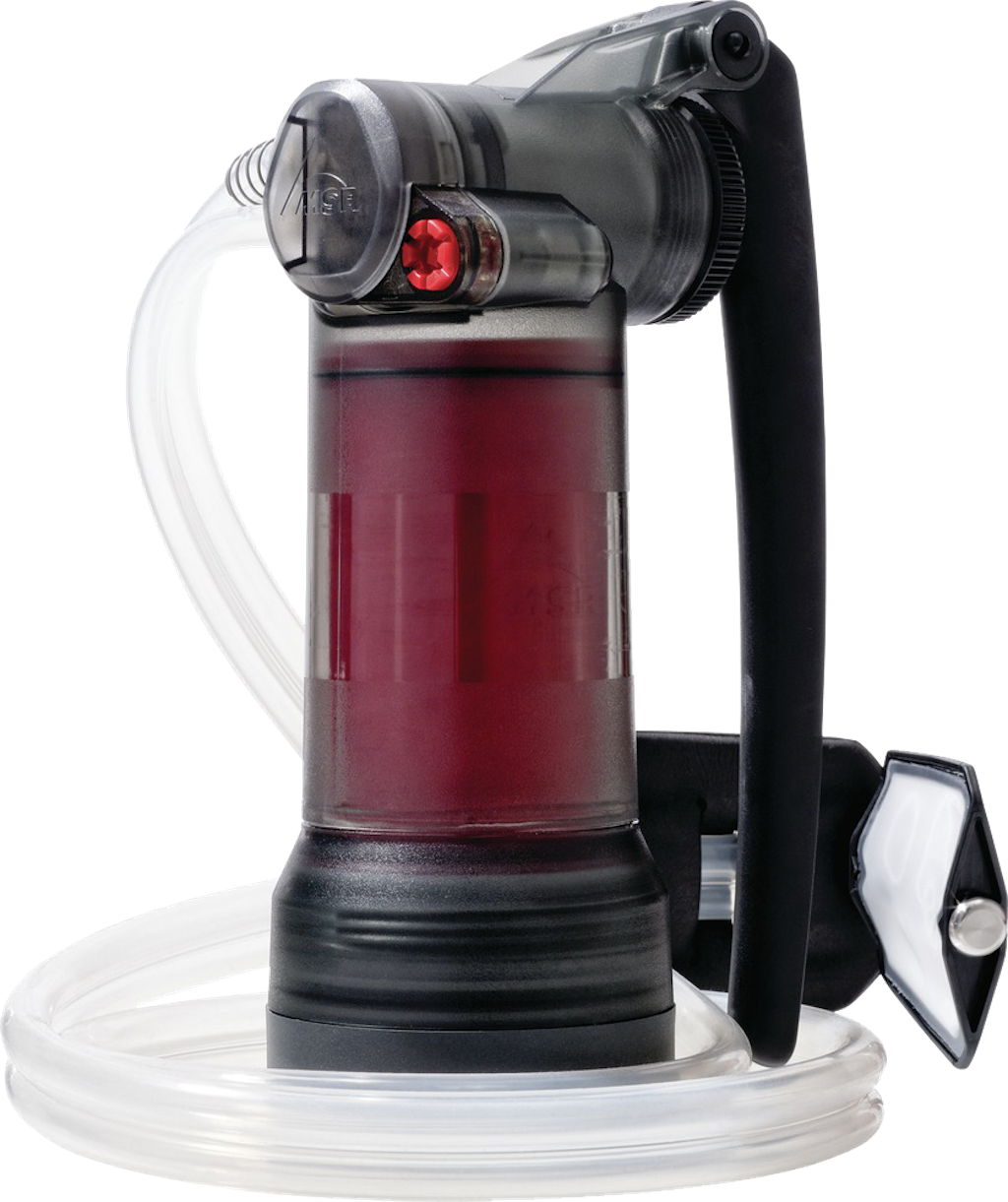
Removes: Viruses, bacteria, parasites, sediment
Treats: 10000L+
Weight: 490g
This is a larger pump purifier but it is a powerful one. It was originally developed for military use and meets rigorous independent testing standards (NSF). It has a slightly different pump action to the other pump filter on this list but works similarly. The main differences are: this pump doesn’t have an out hose but threads onto wide mouth bottles like Nalgenes (though the flow is small enough to filter into smaller containers, you’ll just need a bit of accuracy), and it won’t freeze. The replacement cartridges are expensive, however, with a 10000L or more lifespan, it’s unlikely you’ll need to replace it in a hurry.
from £329
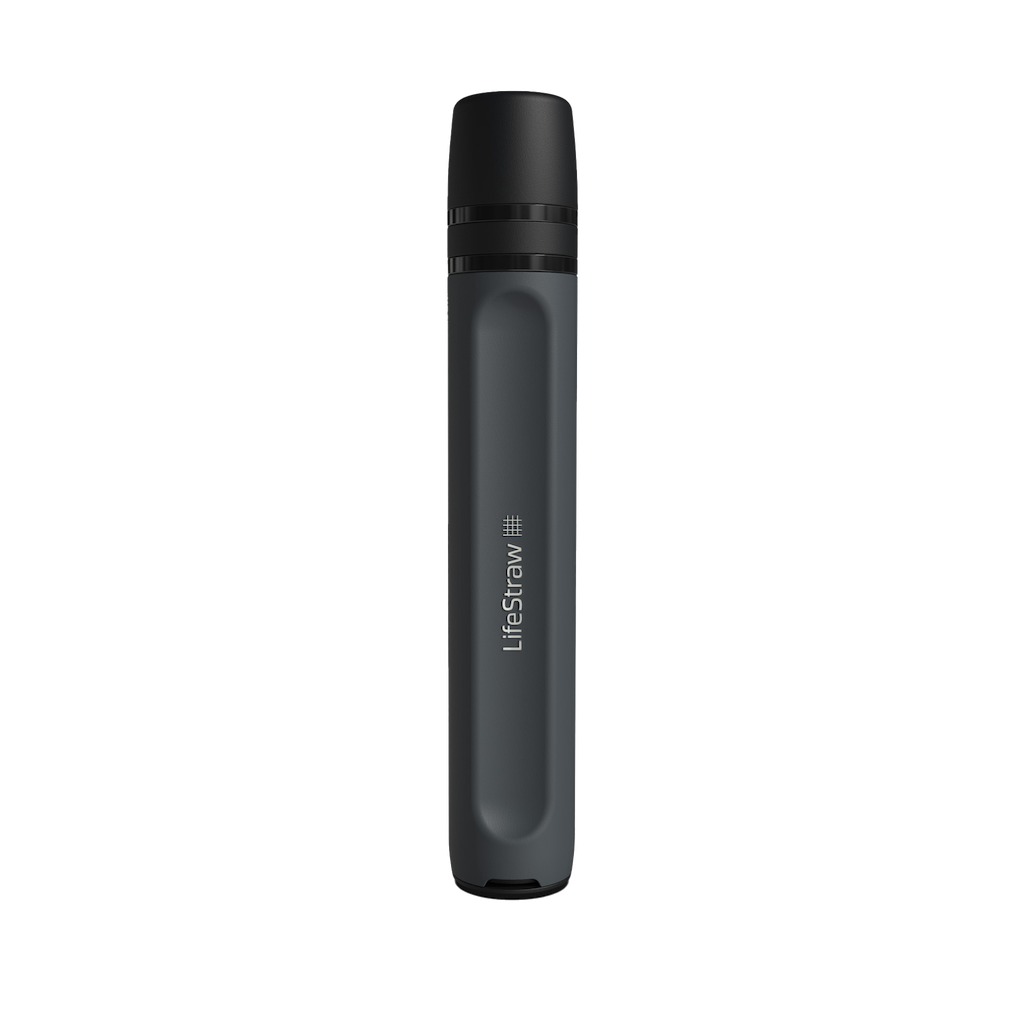
Removes: Bacteria, parasites, microplastics, sediment
Treats: 2000L (the slightly larger Peak Straw can treat up to 4000L)
Weight: 48.2g
The Lifestraw Peak Solo straw is an incredibly convenient ‘squeeze’ type of hollow fibre filter. This means that you screw the straw onto a squeezable bottle and squeeze the water through it. It has a great flow rate and is so small and compact you could forget you were carrying it. The most frustrating thing about it is that you need to have a 28mm thread bottle to make it work, and whilst these aren’t difficult to find, it can ultimately limit the straw’s usage as it isn’t an all-in-one situation. Nevertheless, if you’re in a place where you’re not concerned about viruses, there isn’t much better in terms of quality.
£29
Lifestraw Peak Series Gravity Filter 3L
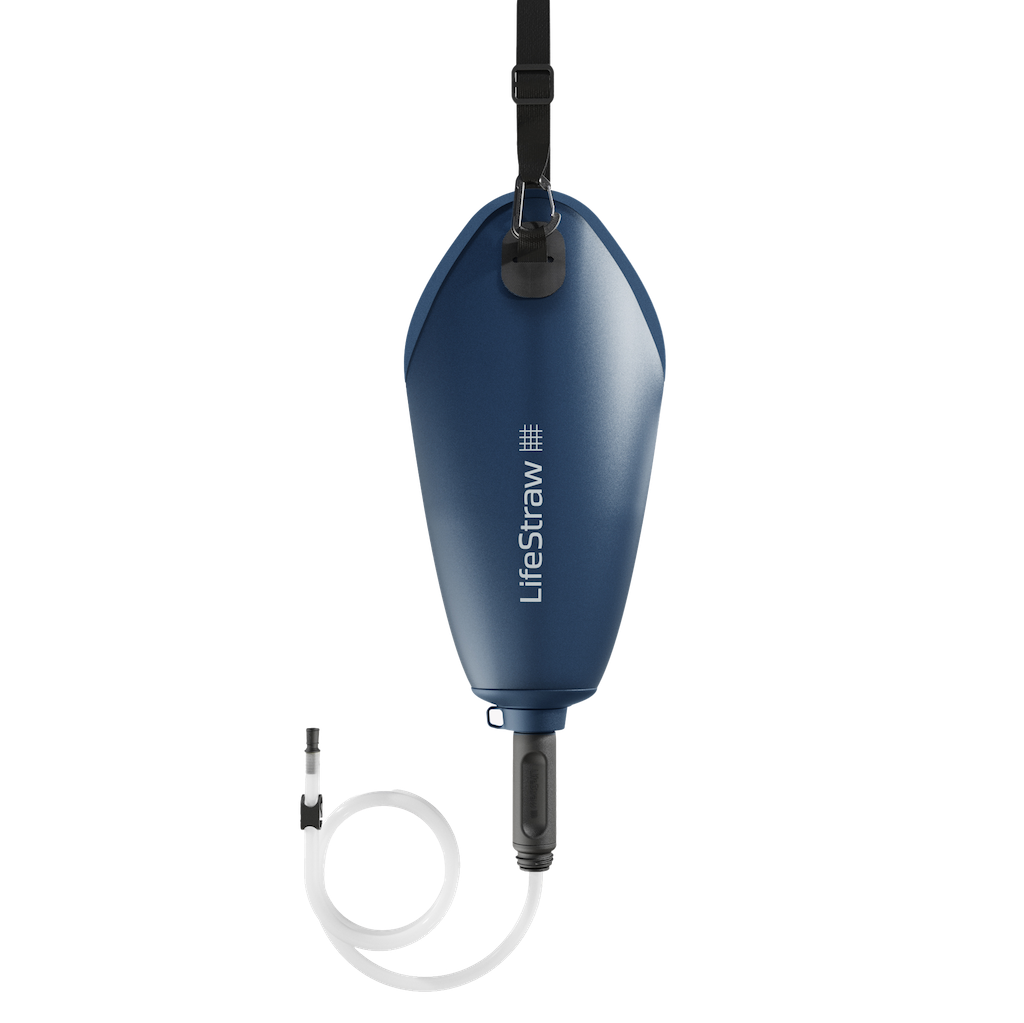
Removes: Bacteria, parasites, microplastics, sediment
Treats: 2000L
Weight: 228g
Lots of filter companies use their technologies in different ways, like this Lifestraw Gravity Filter. It has the same technology as the Peak Series squeeze straw, but with a better flow rate and its own reservoir. Simply fill the reservoir, hang it up, and let gravity do the work. It’s perfect for bulk collecting or filtering water and is amazingly convenient. The only real downside is, with only gravity pushing the water through the filter, it doesn’t handle heavy sediment very well, which reduces its flow rate, plus you’ll be left with a decent amount of wet gear to carry.
£70
Platypus QuickDraw1L filter system
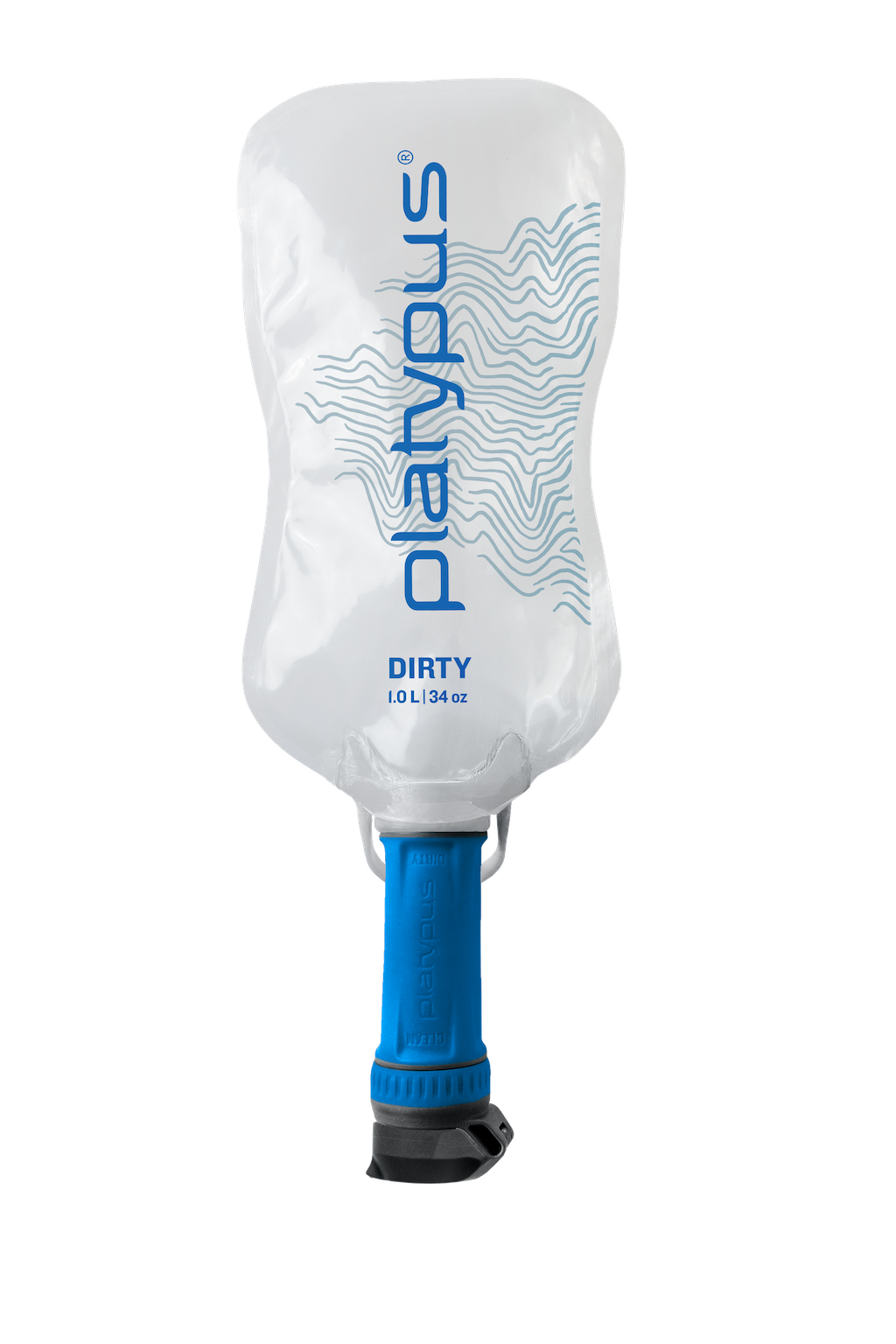
Removes: Bacteria, parasites, sediment
Treats: 1000L
Weight: 95g
This squeeze filter works similarly to the Lifestraw Peak Solo and filters to the same standard, but the Platypus QuickDraw is more versatile and comes with its own resevoir. With dual threads and a ‘Connect Cap’, you can customise your set up to different bottles and reservoirs too. Equally, the Platypus integrity test means you never have to guess whether your filter is working if you’ve accidentally left it in the cold or dropped it. This will of course keep you safe and will hopefully save you money, knowing you will only ever replace it when it’s absolutely on its last legs.
From £42
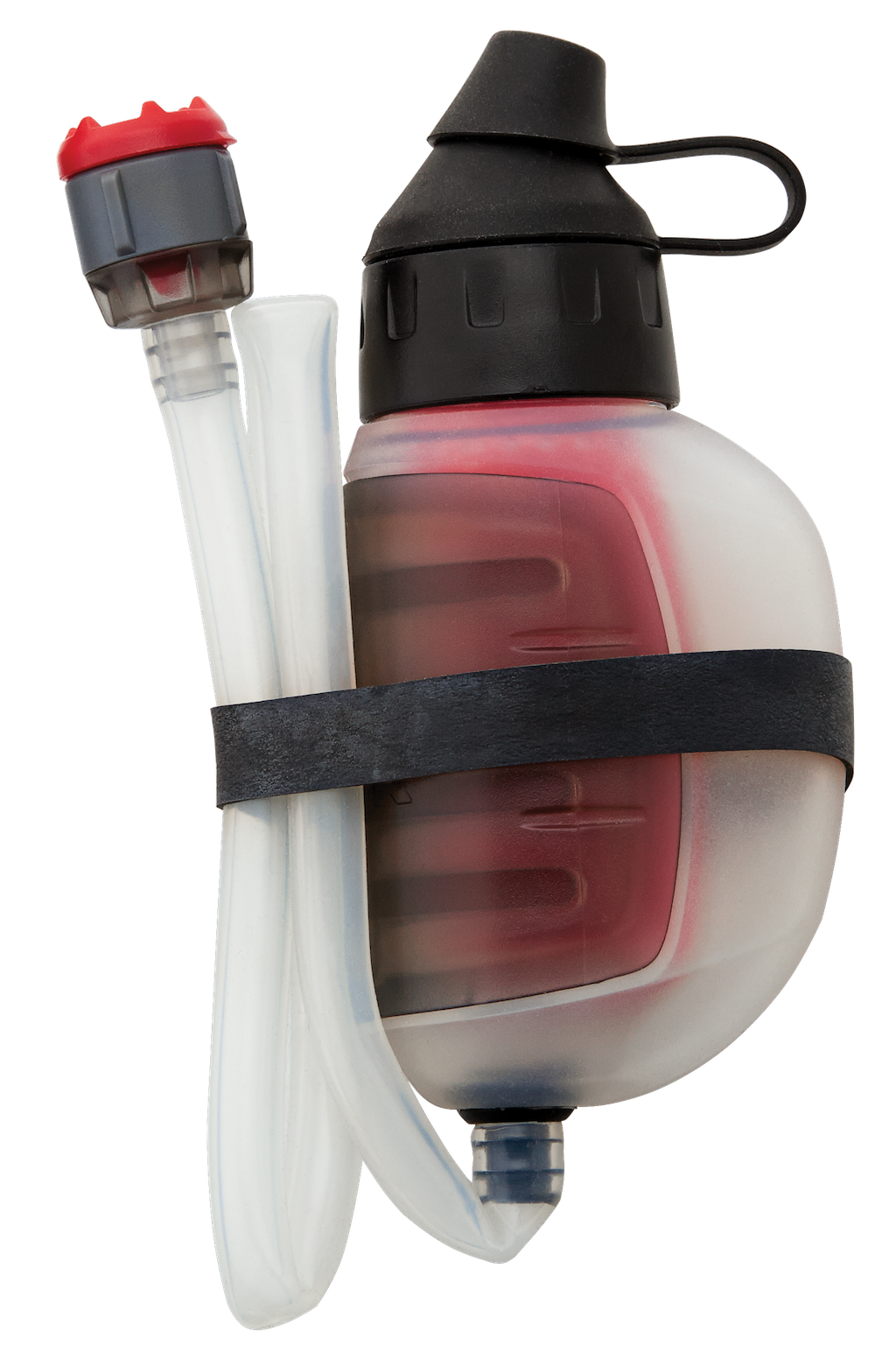
Removes: Bacteria, parasites, microplastics, sediment
Treats: 2000L
Weight: 142g
This mechanical filter is a combo of a pump and squeeze. It has a tube to suck water up into the chamber and then you hand pump the soft chamber either into a bottle, your mouth or, with a tube compatible lip, the reservoir of a bladder. This mechanism means it deals with sediment well and doesn’t need to be backwashed. You can literally shake it clean. Though it is heavier than some of its counterparts, it is small enough to fit in your pocket and more versatile than other squeeze systems. This makes it a good middleman between the heavier pump and the smaller straws in this round-up.
From £50
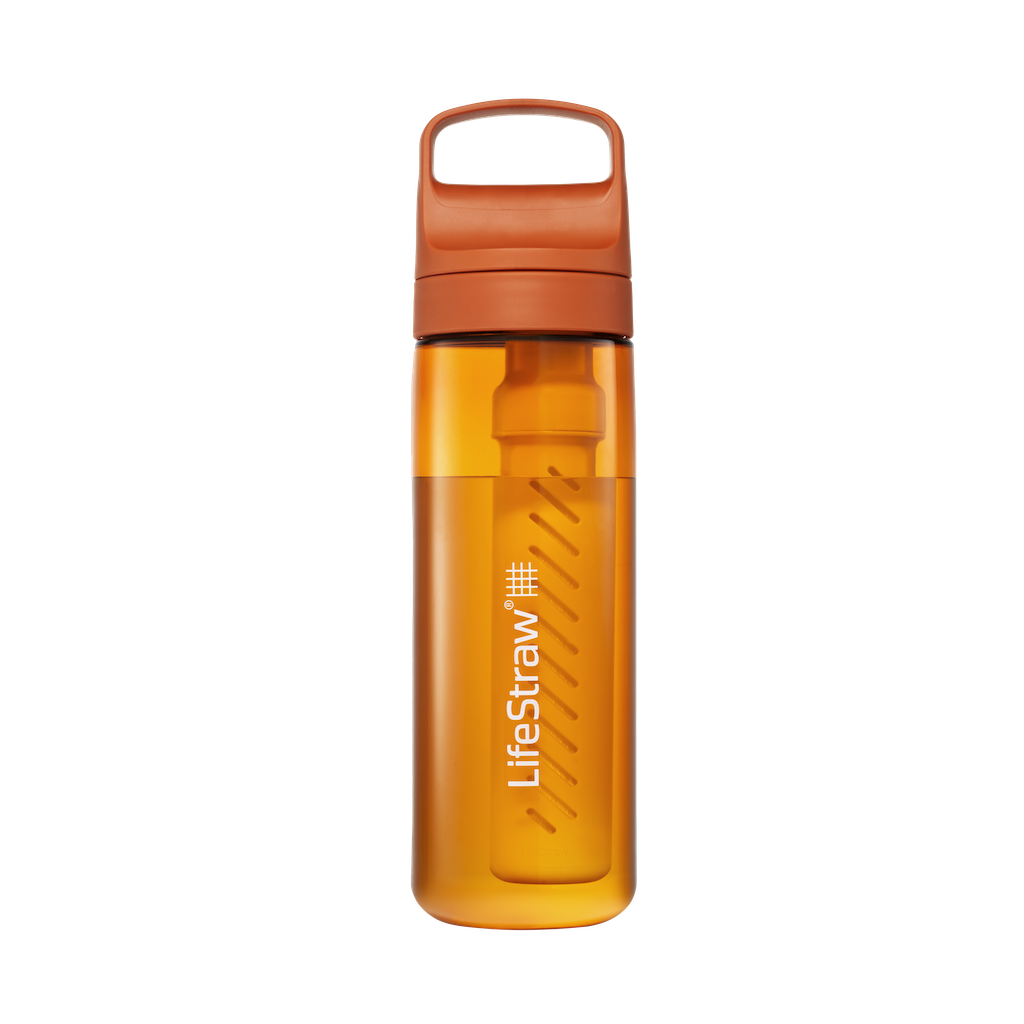
Removes: Bacteria, parasites, microplastics, sediment
Treats: 4000L
Weight: 268g
Most mechanical filter companies will have a bottle with a purifier pre-attached, like this Lifestraw Go bottle. This is a great option if you’re not interested in bulk filtering and you know you will have regular access to water. It’s super convenient, if a bit of a mouth work- out to get a good flow, but cuts down on the amount of wet gear you have to carry. There are also squeezable bottles in this range that will last for 2000L if you want something a little lighter and space saving.
From £47
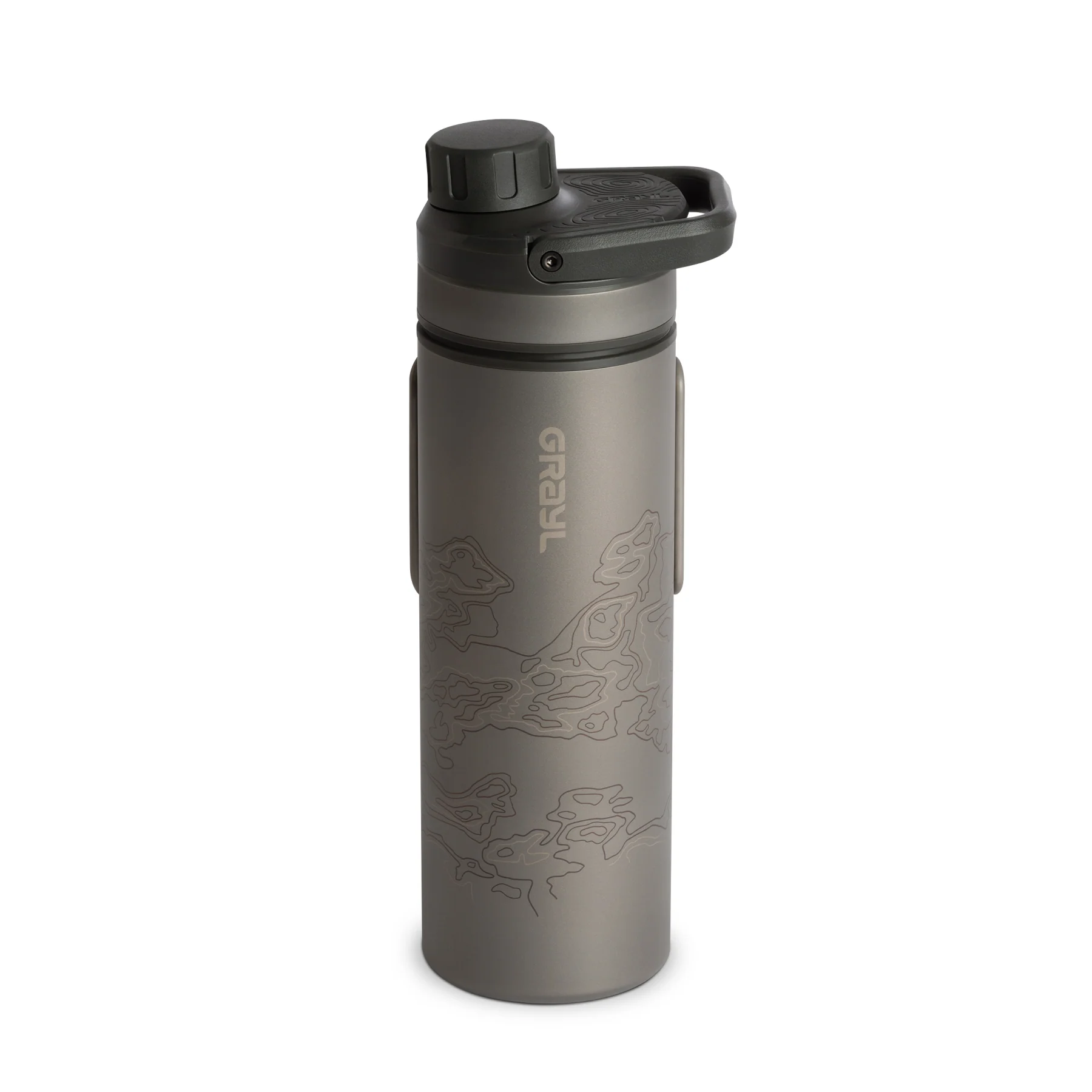
Removes: Viruses, bacteria, parasites, sediment, chemicals (PFAs & VOCs), heavy metals
Treats: 150L (300 presses)
Weight: 400g
This purifier works with a press system; you fill up the main cup and simply press the purifier on top of the dirty water to leave it safe. This bottle is unique because it does it all, it is designed to clear everything the most robust purifiers on this list do, plus heavy metals and some chemicals. It also has a wide mouth and a one way valve system, so you can add flavourings or electrolytes to your drink without messing up the cartridge. The metal casing means it doubles as a boiling receptacle as well. The major downside is the short cartridge life, however, with replacement cartridges at around £30, the cost may be worth the payoff for the level of purification you’re getting.
£199.95
CamelBak crux 2l reservoir filtration kit
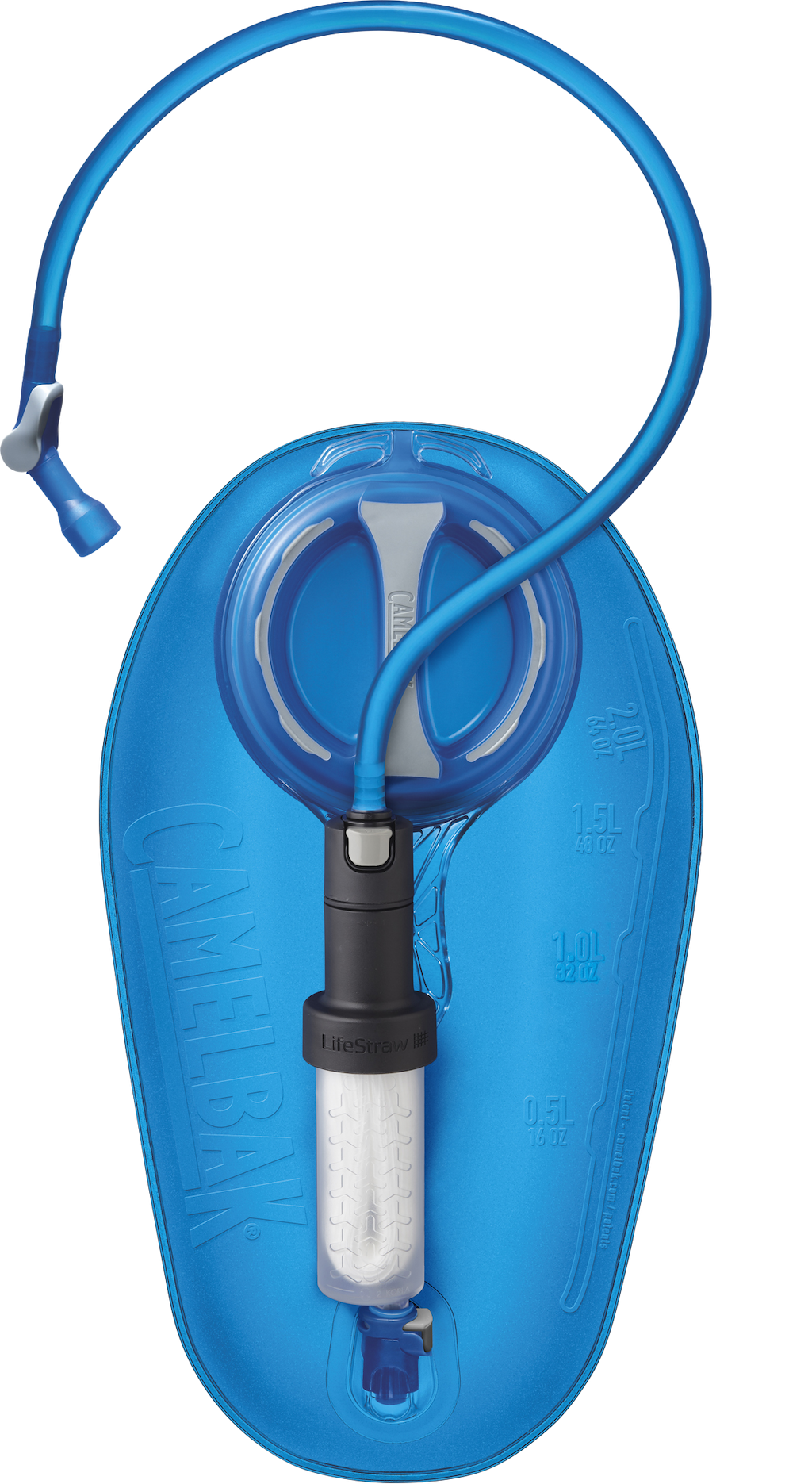
Removes: Bacteria, parasites, microplastics
Treats: 4000L
Weight: 282g
Camelbak has fitted out their Crux Resevoir with Lifestraw technology to bring you a bladder that filters your water instantly. The most impressive thing about this two-litre number is the flow rate. Even filtering very muddy water, it wasn’t a hassle to get a good sip. Its compact shape will work with most backpacks. The only downside is we aren’t a fan of the opening to fill the bladder. We found it inconvenient and easy to make a mess with, which, when you’re working with dirty and potentially dangerous water, isn’t ideal.
£70
Chemical
Lifesystems Chlorine Dioxide Tablets
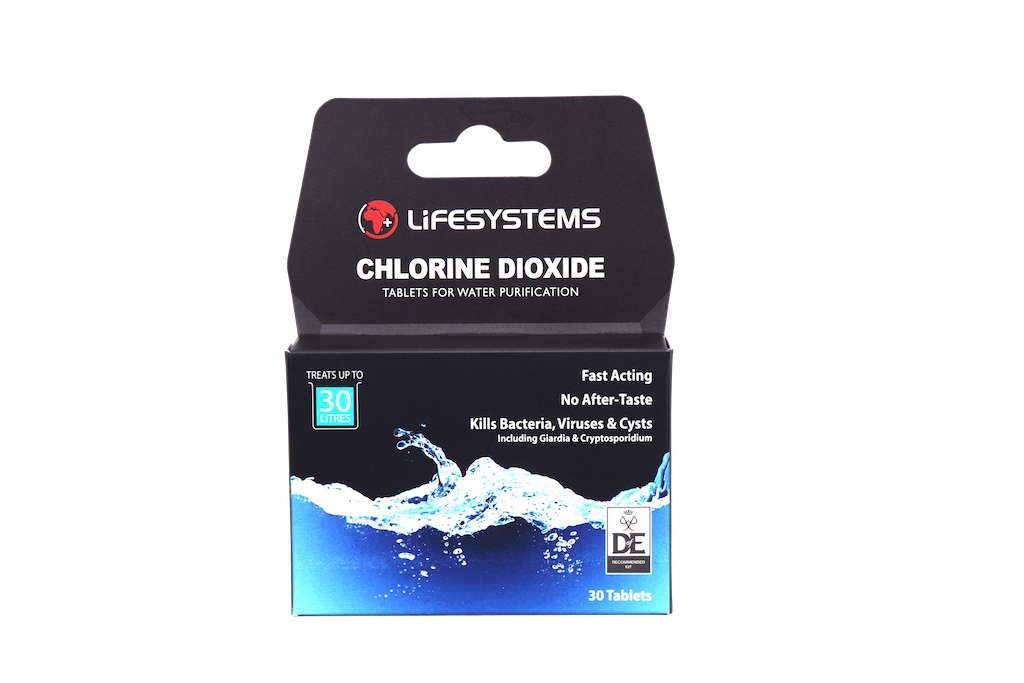
Removes: Bacteria, viruses, cystic parasites
Treats: 30L
Weight: 40g
These chlorine dioxide tablets are the simplest purifiers on this list, you simply pop a tablet in your bottle and give it a shake. If you aren’t sure whether you’ll need to purify water, they’re probably your best option, as they’re so light and they require no extra wet gear. However, as we mentioned before, they purify the smallest amount of water per purchase and you have to mechanically filter sediment, which requires managing a damp cloth for the duration of your adventure. You also have to wait 10-30 minutes before drinking. There is a chemically taste and smell to the water, but it isn’t a bad trade-off for the convenience, size, and safety they provide. Chlorine Dioxide drops are also available and do a similar thing, they just treat slightly more water per purchase.
£10.99
UV
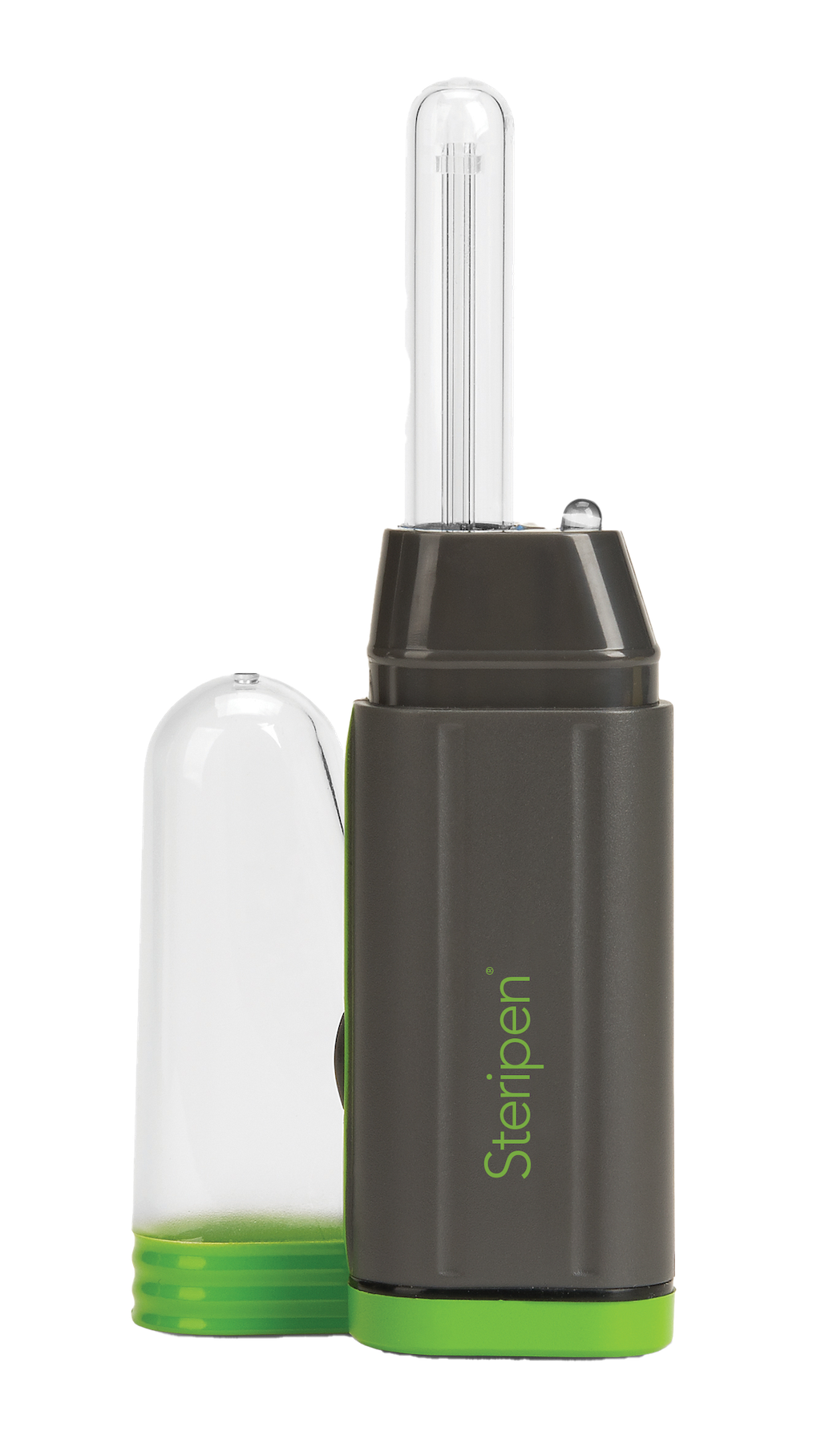
Removes: Bacteria, parasites, viruses
Treats: 8000L
Weight: 103g
This compact little UV purifier is very convenient and very powerful. Treating up to 8000L for bacteria, parasites and viruses, its size/weight to use ratio is impressive. You simply place the pen in the water (with a suitably wide-mouthed receptacle) press the button and stir until the LED goes out. The only downside is that the Adventurer Opti is battery powered so you need to carry an adequate number of spares. Steripen do have rechargeable UV pens if you’ll be passing through places with electricity on your trip. As with the chemical purifiers, you have to remove sediment yourself, but with its own cap and carry case you don’t have to worry about wet gear.
RRP £94



